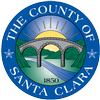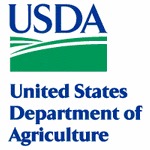


Keeping Landscapes Working Newsletter
Keeping Landscapes Working provides information to managers of both public and private rangelands.
| Issue | Articles | Type | Date Added |
|---|---|---|---|
| Keeping Landscapes Working Spring 2011 | The following articles are in the Spring 2011 issue of Keeping Landscapes Working: | 4/22/11 | |
| Keeping Landscapes Working Fall 2009 | The following are articles in the Fall 2009 issue of Keeping Landscapes Working: 1. In Search of the Green Cow 2. Cows, bikes, hikes and kites: Minimizing conflict between public recreation and grazing livestock | ||
| Keeping Landscapes Working, Sp09 | In keeping with the current media focus, this edition of Keeping Landscapes Working focuses on economic issues of rangeland management and beef cattle production. “Ecology and Economics of Medusahead Control” reviews current research results from studies conducted by UCCE in cooperation with ranchers testing various strategies to control the annual invasive grass, medusahead. “Natural or Implant Economic Opportunities” includes cattle marketing data collected from the Western Video Market over an 11-year span. This article discusses the costs and benefits implanting cattle with growth promoting hormones. | ||
| Keeping Landscapes Working, Winter09 | This issue of Keeping Landscapes Working includes information on two upcoming meetings that provide in-depth coverage of recent research findings. A workshop on drinking water quality and livestock management will be held on January 29, 2009 in Stockton (page 2). An international conference on Beef Improvement will be held April 30- May 3, 2009 in Sacramento (page 7). In addition, this issue provides some information on internet weed assistance (page 1) and an article on a decision some cattlemen may be facing to reduce costs: Smaller Cows or Smaller Herds (pages 3-6). | ||
| Summer 2008 | This issue of Keeping Landscapes Working considers three different aspects of vegetation on livestock health and well-being. The first article summarizes the occurrences of livestock poisoning in California. Although livestock poisoning is not typical when an adequate selection of forage is available, livestock poisonings are reported. It is interesting to note that in California, oleander is by far the most commonly diagnosed cause of livestock poisoning. The second article includes strategies to control the Tree-of-Heaven. This tree can impact forage quality for both livestock and wildlife. The third article considers the impact of fire on livestock. With fire season still upon us, understanding how smoke and fire may impact livestock as well as how to care for injured livestock is worth considering. | ||
| Fall 2007 | This issue of Keeping Landscapes Working includes summaries of global climate changes opportunities and challenges for rangeland managers. Also included basic climate exchange specifications for rangeland soild carbon management. We have gleened an adaption of "Perennial Grasses for California Rangelands", by T.E. Adams and B. Kay. | ||
| Winter 2007 | This issue of Keeping Landscapes Working includes summaries from three presentations made at the symposium. A proceedings of the symposium is available on CD. Contact Sheila Barry, sbarry@ucdavis.edu if you would like to receive a copy. | ||
| Winter 2006 | Ranchers, Environmentalists, Agencies, Establish Landmark Partnership; The California Rangeland Resolution; California Native Grasslands: A Historical Perspective, A Guide for Developing Realistic Restoration Objectives; Where to View a Native Grassland; Upcoming Spring Workshops. | ||
| Fall 2005 | East Bay Shrublands, Fire history of the San Francisco East Bay Region and implications for Landscape patterns. Q and A regarding: Animal identification or why livestock producers may need a premises id. Weed Watch: Stinkwort or Stinkweed ( Dittrichia graveolens). | ||
| Spring 2005 | Answers the Questions What, How, and Where to Monitor, A Sample Monitoring Table, Herbaceous Plant Measures, Monitoring Woody Vegetation, A Oak Workshop Flyer | ||
| Fall 2004 | Cattle Impact on Stream Channels, Spring-fed Wetlands Research, Survey Identifies Sediment Sources, Minimize Sheet, Rill and Gully Erosion; Vegetation Effects on Water Yield, West Nile Watch. | ||
| Spring 2004 | Lyme Disease Page, West Nile virus, Sudden oak Death,Preventing Abortions in Cattle, California Grazing Academy, California Browsing Academy. | ||
| Fall 2003 | Stockponds are Valuable Rangeland Features for Conservation of Habitat, Care of the Pond, Grazing Value for California Tiger Salamander, Horse Owners News on the West Nile Virus. | ||
| Fall 2002 | Grass-fed Beef, Challenges of Direct Marketing, Sudden Oak Death,Cryptosporidium Traced to Ground Squirrels, Controlling Ground Squirrels. |
